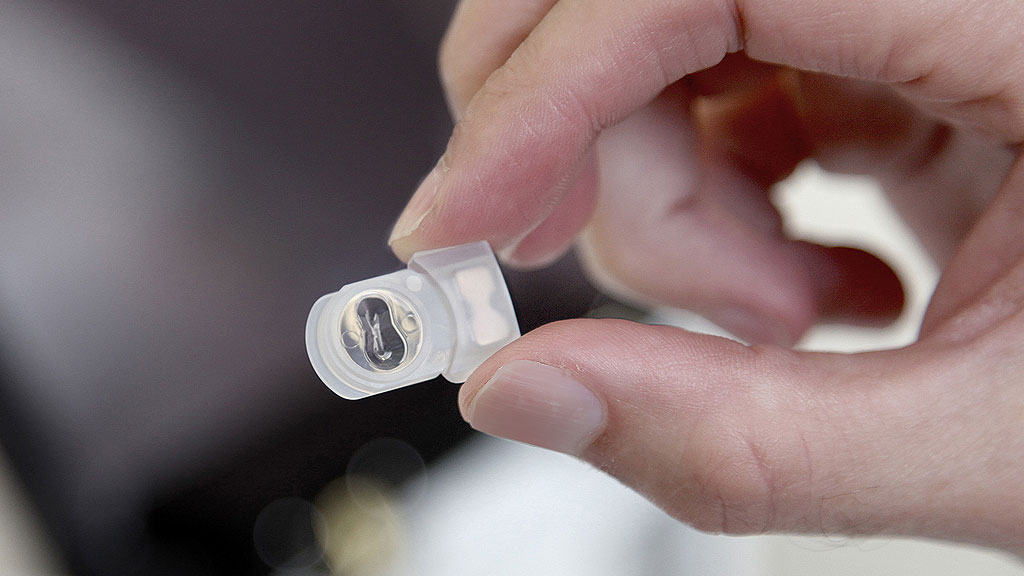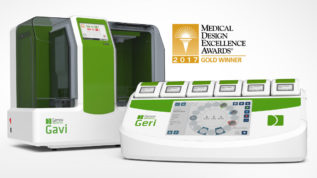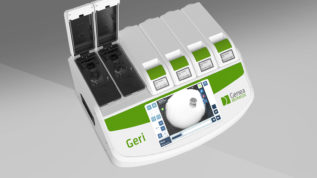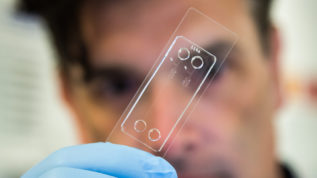
In London on July 8, 2013, in front of the global IVF community at the European Society of Human Reproduction and Embryology (ESHRE) conference, I presented a paper that revealed the details to the microfluidic pod that enabled automated IVF vitrification for the first time in the world.
Developed by Genea Biomedx and Planet Innovation, the pod is used within the revolutionary automation instrument known as Gavi (Genea Automated Vitrification Instrument). This is a summary of what I presented and highlights that it was the innovation around the consumable ‘pod’ which really held the key to achieving the automation breakthrough.
During an IVF cycle, embryos which are not transferred immediately back to the patient are placed in cryo storage through a process called vitrification. Since IVF was introduced more than 30 years ago the vitrification process has been very manual. The vision of both Genea Biomedx and Planet Innovation was to reduce variations in IVF vitrification by automating and standardizing the process.
Through extensive voice-of-customer studies we determined that the market had five key requirements from an automated vitrification platform. They were:
The complications in achieving these market needs were that human embryos are fragile, they float, they can change shape and they are very small. This is why the process had remained manual.
Right from the start, the idea was to secure the embryo in location and exchange the media without damaging or losing the embryo. We didn’t know how we were going to achieve this goal, but we believed that this revolutionary approach held the key.
The current embryo vitrification process is a manual and specialist task. It involves an embryologist physically moving the embryo from fluid to fluid by hand. As a result the process is highly variable and time consuming. There were also many unknowns in just how to automate the process.
What was known was that for the automation to be effective and achieve the desired results, six key variables had to be controlled extremely precisely. These were:
Manually, it is possible to control one or two of these variables, however, our aim was to control all of them. It initially appeared almost impossible, like trying to hit a bull’s eye from a great distance.
We gathered an extremely talented and diverse team to interpret the voice-of-customer results and develop prototypes. Many concepts were developed and tested through rapid prototyping. Without describing them all, the concepts included a mesh concept, a perforated cone idea, tweezers, a microfluidic cartridge, the golf tee, a wineglass concept and the restricted tube.
All these concepts ended up being eliminated very quickly. The mesh concept was initially favored as the best idea. However, through testing we discovered that as we drew the solution through the mesh, the sensitive embryos would also be dragged through the mesh and disintegrate. Another failed concept was the restricted tube. With this idea the embryo would be drawn up the tube into a restriction where it was held while fluids were exchanged. However, the embryos would often become stuck in the restriction and could not be retrieved.
The winning idea was the ‘pod’. We ran through over 15 prototypes as we constantly improved and further improved the concept all the way through to the production design.

The pod was effectively a microfluidic channel that locates and positions the embryo. The vitrification fluidics are allowed to be exchanged with gradual diffusion of the solution around the embryo, which prevents toxic shock on the embryo. Thin wall sections were designed in to the consumable pod to achieve the required vitrification rate and after the final fluid is dispensed the pods are sealed to fully protect the embryo from any liquid nitrogen contamination.
The Gavi instrument controls the embryo microenvironment to within 0.5 degrees Celsius of the protocol temperature. To control the volumes a customized dispensing system was developed to dispense 1 micro liter with 0.2 micro liters accuracy. The instrument also performs the pod sealing in a controlled time, temperature and manner.
We use software to standardise the protocol and control the time, environment, volume and temperature.
The pod, with the Gavi instrument, now controls all six variables: Temperature, Time, Volume, Media Concentration, Speed of fluidics and Vitrification rate. Automated vitrification, which had seemed almost impossible to achieve in 2009, was now a reality.
My two key learnings are:
Eduardo is an Executive Director and co-founder of Planet Innovation. Eduardo has been directly responsible for the conception, development and commercialization of several new multi-million dollar technologies. He formerly held senior product & business development roles at Vision BioSystems & Genetic Technologies.
A roundup of the latest news and opinions from PI.

Planet Innovation was a standout performer picking up two of the highest honors at this year’s MDEAs for innovation in medical product design and engineering.

Genea Biomedx has created an incubation instrument with time lapse photography, which allows scientists and potential parents to watch their embryos grow in their first crucial few days.

An RMIT University researcher working with PI on technology that can test patients for bleeding or clotting disorders has been awarded more than $650,000 in NHMRC funding.

Australian fertility group Genea has been successfully sold to an Asian consortium for more than AU$250 million after disrupting the fertility industry with a range of new IVF technologies.
 News
News
Planet Innovation was a standout performer picking up two of the highest honors at this year’s MDEAs for innovation in medical product design and engineering.